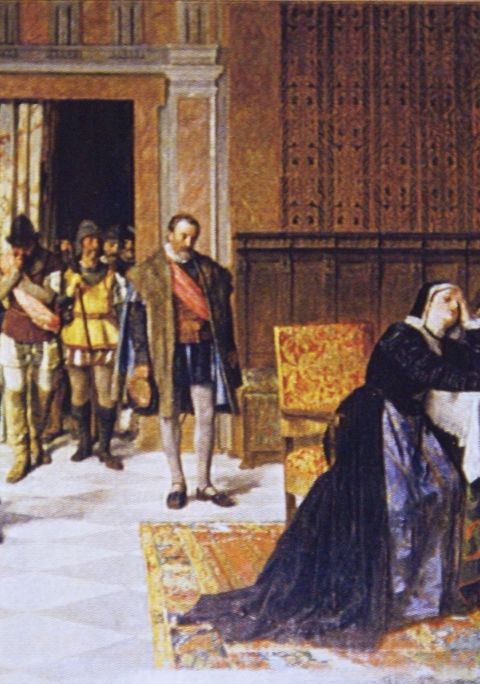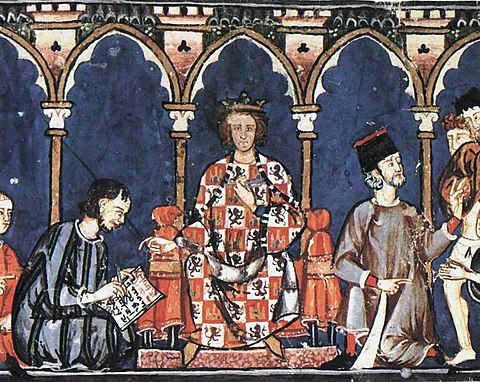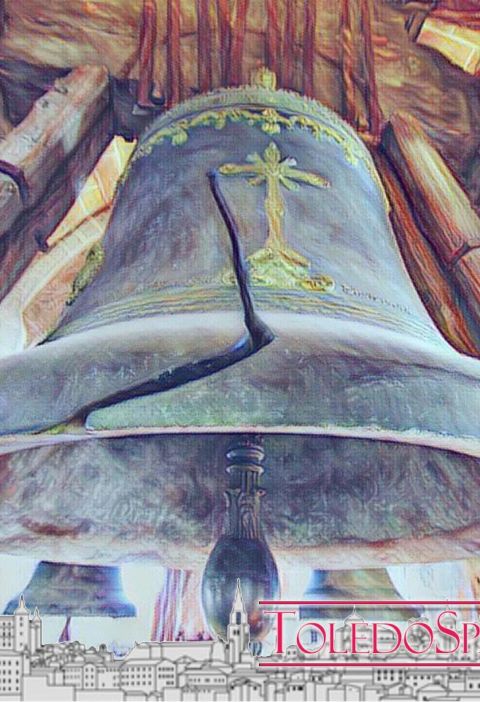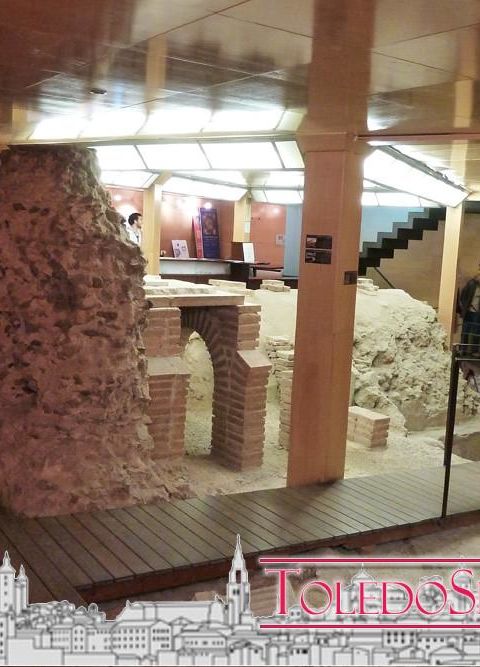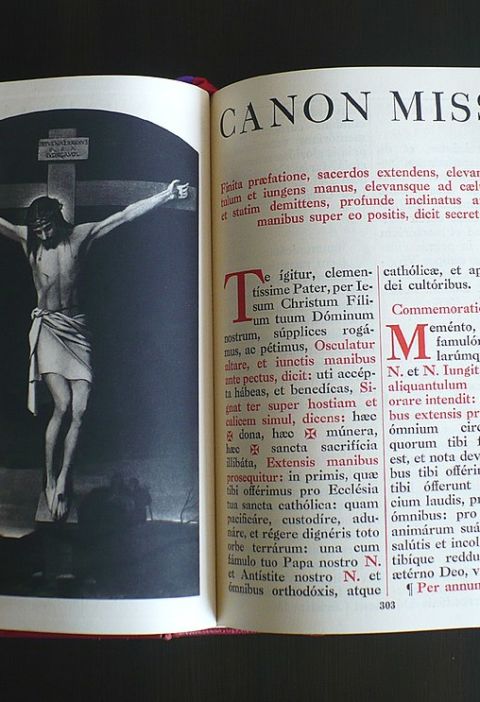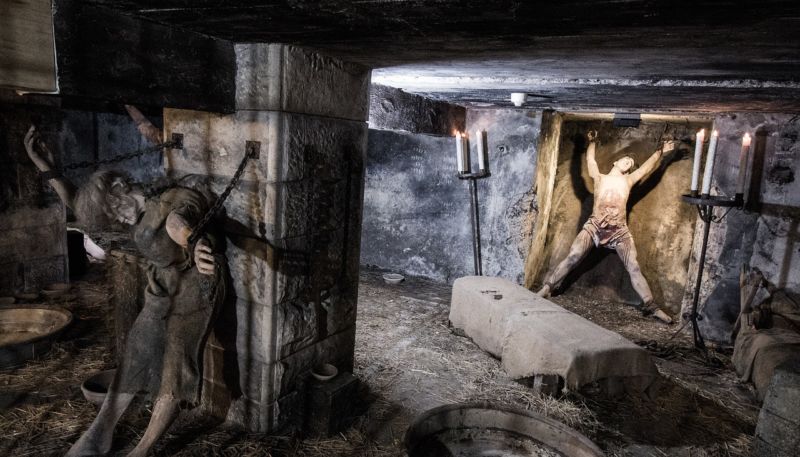2008 marks the bicentenary of the ” War of Independence” (1808-1814) against Napoleon Bonaparte and his armies.
We join with this extensive article the initiatives that seek to recover the events that occurred in those days, in our case, which significantly affected the city of Toledo.
Toledo was forced to welcome more than 10,000 French soldiers under the command of General Dupont.
With the arrival of the troop, began the looting, robberies and offense to the Toledans that characterized their stay in the city.Click to Tweet
Index of Contents
What history tells us
History is the best witness of what happened during the years of the War of Independence. Here is a summary.
The proximity of the city of Toledo to the Villa y Corte located in Madrid, and its location in the geographic center of the peninsula, caused the city to have a very notable importance during the course of the war.
He states Juan Manuel Magán in the document “Toledo and the War of Independence” (see Bibliography):
In the historical memory of Toledo and its province were marked the bitter memories of the passing of the troops of Dupont, Victor, Valence and Soult. Their mark remained indelible in the form of destruction, looting, extortion and outrage. Some military confrontations of particular significance in the development of the conflict were fought on Toledo soil. The actions of the guerrilla groups found in the provincial geography a propitious scenario, achieving here a very notable development and playing a relevant role.
From opening 21 in 1808, there were tumults in Toledo caused by rumors that Charles IV would return to power and by the arrival in the city of General Marcial Thomas with instructions to house more than 10,000 soldiers and 400 horses. Following orders given on 30 March by General Joaquín Murat, Grand Duke of Berg, General Dupont’s Division, on its way to Andalusia, was to stop in the city of Toledo, where it was provisionally to be housed.
The people of Toledo, tired of a useless government, rioted in a riot that ended with looting and assaults, as well as the destruction of property of municipal representatives. General Thomas himself was forced to leave the city hastily. The mutiny ended with a cheerful end to Ferdinand VII, also instigator of the revolt against the French, and the installation of portraits of the king in Zocodover and Town Hall (ToledoSpain.Click).
After this brief revolt, Toledo was forced to welcome more than 10,000 French soldiers under the command of General Dupont. With the arrival of the troop, began the looting, robberies and offense to the Toledans that characterized their stay in the city. The first action was a robbery in the Alcazar, where they were lodged.
On May 2 the uprising took place in Madrid and the War of Independence began. The resistance was organized in Provincial Councils, with Cardinal Luis María de Borbón leading the resistance in Toledo.
At first, French troops left Toledo on May 31, 1808, to be defeated at Bailén. But in December they returned to the city causing much more damage than they initially did, in addition to the flight of numerous population and ecclesiastics.
Blockquote td_pull_center;
Toledo will always keep the memory of the robberies, looting, fires and murders caused by the Napoleonic troops, which were not only French, because there were also Poles, Germans, Italians…
They murdered numerous neighbours, highlighting those that have remained in the collective memory, such as the order to hang a shepherd and his son from two trees, after having found them two firearms, or the condemnation to be shot four toledanos in the Vega. The rapes of numerous young people (and not so much) from Toledo were a very common occurrence throughout the occupation.
Searching for treasures they desecrated the tombs of the Godos kings located under the Capuchin convent, and later destroying this building in its entirety to clear the area closest to the Alcazar. When the monks returned after the war, they were only able to recover a few remains of those kings, which they placed in a tin boat and in an earthen vessel that they placed in a niche of the Cathedral. (ToledoSpain.Click)
They were also on the verge of totally blowing up the city due to the fire of the Alcazar, which housed numerous provisions of weapons and gunpowder, which were removed in time before its explosion.
It would be difficult to make a complete review of the numerous buildings (palaces, monuments, convents, churches, houses…) and heritage destroyed in the city by the occupation, but we can certainly say that the French troops have been one of the greatest heritage disasters suffered by the city in all its history.
The entrance in Toledo
An Augustinian friar describes the arrival in Toledo of the first French troops.
An Augustinian friar residing in the Convent, now disappeared, of his Order in Toledo counts thus the entry of French troops into the city on 26 April 1808:
” Day 26 Dupont entered with 10,000 men in two pieces: one through the Visagra Gate and the other through the Alcantara Gate. He came as if to enter by force, putting his infantry, cavalry and artillery in order, thinking of finding resistance and threatening that at most he could lose his vanguard, but that in such a case, Toledo would be destroyed.
It all came down to threats, because Toledo didn’t resist because he didn’t have what. In this convent the 4th legion and other bodies were lodged up to a thousand and two hundred men from the black staircase in which the division was made until the last thing towards the river.
The worries that caused us, although they pursued as friends, were many. I have not seen any people, even the officialdom, more ignorant, more without upbringing, more daring and insulting, more without religion and more without morality in their bearing, and although some German and Italian soldiers of those brought by force kept religious thoughts, they had to hide to practice them.
The room they were given suffered a thousand damages: they burned doors and windows, made the well and cisterns useless, unblocked several pieces of the cloister, broke partitions, broke tenajas and sold the irons they were able to pull out at a lower price, like the cheek of the cistern they gave him for two reales. (ToledoSpain.Click)
The sustenance given to them either by the City, or by the City Hall, was bread, wine and meat, and although they were given the necessary coal for the supply, which they still had left when they left, that is why they did not stop burning even the spans of the stairs.
It was common to say that it mattered more what they wasted than what they mainly took advantage of the rich meat they were given, because the windows were surrounded by flaps of meat blacker than a fish.
Ten and six million reais imported the accounts of their expenses, and they were so excessive in asking millions of anything, such as shoes, shirts, cloths, that it seemed that those men were trying to make the people rage and resist and with that pretext loot the Church and the City.
Hospitals became an article of extreme conjunction, mainly of generous wines that instead of spending them as they should, they applied them to their banquets.
The ignorant French doctors left the soldiers to die in droves, and if they had not put the Hospitals under the care of the Spanish Doctors, a Frenchman would not have survived. Generally speaking: his attitude in Toledo was daring, insulting with contempt, threatening, provocative and with no sign of having had a medium upbringing”.
Desmanes de los Franceses en Toledo during the invasion of 1808
On December 13, 1808, the French entered Toledo under the command of Bellune, Semelle, Billard, Pitot and other generals. 20,000 men came from Madrid. They spent 10 days doing atrocities, which I will say by major in the barracks that were Santo Domingo, San Juan de los Reyes, San Agustín Calzado, La Merced, Trinitarios Calzados y Descalzos, el Alcázar, La Universidad, Colegios de Santa Catalina y San Bernardino, las Provisiones del Vino, in a room for foundlings in a hospital, and the Church of this occupied with those of the Pan.
This author details the many abuses and destruction caused by the French troops that stayed (or occupied) Toledo during the War of Independence.
He details fires, such as the one that took place in the aforementioned hospital, which “was not a big deal because it was done on time with countrymen and doctors, but the troop only dedicated itself to laughing and seeing how the aforementioned one burned”.
They also set fire to the convent of San Juan de los Reyes, which burned for four days, and was one of the monuments that suffered the most damage during the occupation (now fortunately rebuilt, especially its magnificent cloister).
The author narrates how the soldiers made themselves capes out of the sayal of the religious, ate everything in provisions, stole as much as they could, and provoked a massive departure of the neighbors from the city for fear of the first days of the occupation.
It narrates the rage of the French troops with religious buildings, such as the convent of San Francisco de Paula, where they stables the church and sacristy, stole all the silver, stripped the images and cut off hands and heads… The fire was also common among the occupants.
The reprisals against the neighbors were not long in coming. In addition to staying in their homes and committing robberies and looting, on numerous occasions they were killed Toledans for various reasons.
The honour of the Toledans was not respected either, because according to him “they committed the greatest excesses joining gangs of 8, 12 and 16, and entering the houses they forced all the women they found in them, these gave complaints to their bosses, these made themselves deaf and to say of once their brutal vice an old woman of 68 years was not sure…”. (ToledoSpain.Click)
The Toledo Volunteer Battalion of 1808
A group of courageous Toledo students fought during the War of Independence.
On August 14, 1808 the Cloister of the University of Toledo met to try to find ways of helping to stop the French invasion.
Several professors offered to enlist in the event that a special body was formed, so four professors were asked to study the project for the creation of this body.
Three days later, the commissioners presented to the Cloister the solutions to the problem, even determining the uniform that the future members of the Battalion would wear. Part of the necessary funds for the support and equipment would be contributed by the University and also by the Cabildo of the City.
A number of six hundred men distributed in four companies was set, in which the military military command would set the officers and non-commissioned officers. The battalion had access to as many students and teachers as they voluntarily wished.
It was prescribed that enlistees would report daily to the University at 8 a.m. and 5 p.m. for weapon handling exercises.
The Central Supreme Board, based in Aranjuez, approves the Toledo proposal and sends several officers to help organize the Battalion, called “Corps of Honorary Volunteers of the Royal University of Toledo.
The University of Toledo communicates its intentions to the rest of the educational institutions of the kingdom, with the objective of “contributing to the defense of the Homeland and the liberation of Don Fernando VII”.
The University of Toledo was the first such center to organize a Battalion to fight the French invader. The unit was entrusted to Lieutenant Colonel Bartolomé Obeso, who represented the Central Board.
Young students enlisted in this battalion will earn a Bachelor’s Degree in major faculty without examination. Those who are already high school graduates will be admitted free of charge to the Higher Degrees of Licenciado and Doctor, but with an exam. The University paid for the uniforms, maintenance and weapons of those enlisted. (ToledoSpain.Click)
Once the Battalion was organized, the Marquis of Ceballos, Doctor and Professor of the University, was appointed to head the Battalion.
The events of the war forced the Central Board to move south, on its way to Seville. After spending the night in Toledo on 1 December, they left Toledo on 14 December, being designated as an escort until they reached their destination, which happened on 17 December.
The unit remained in the area, fighting in the surrounding area throughout 1809. In addition to providing officers to various combatant units, it was the embryo of the Military Academy of Seville. Among its most destcados members was found the one who would later become Regent of Spain during the minority of Isabel II and leader of the Progressive Party, [[Baldomero Espartero]].
Sources:
José Luis Isabel Sánchez: “Toledo and the Centers of Military Instruction”
Battalion of University Volunteers of the Royal University of Toledo.
The retreat and the end of the war
Toledo is damaged but fortunately not completely destroyed. The French troops leave not before leaving a trail of assassinations, destruction, robberies and fires.
Toledo continued to be occupied by troops after the French withdrawal in August 1812. The Spanish troops arrived, “the brigantes of Palarea, those of Grandfather and those of the Commissioner of Yepes”. There were celebrations for the proclamation of the Constitution and the end of the War.
There was a procession with the Virgin of the Tabernacle and various acts in the Cathedral…, but the situation was still serious. Now the city had to accommodate the Spanish troops, but the biggest lodgings had been destroyed and the situation of penury hit all the districts. (ToledoSpain.Click)
But the misfortunes did not stop there, since in December the French Marshal Soult enters the city again, provoking a massive exodus of the neighbors, and episodes of looting and robberies are repeated. The cathedral treasure, which had resisted during all this time, had to be hidden in Yegros by Diego de la Torre and Arce.
Until April 13, 1813 the French troops did not leave Toledo definitively, and terrible reprisals followed against the people who resisted them.
The Legends of Toledo and the War of Independence
The Kiss “by Gustavo Adolfo Bécquer. That you can read in its entirety in these pages (link)
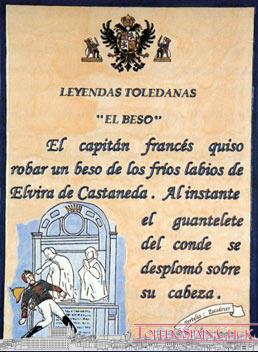 Legend “the Kiss” of Toledo
Legend “the Kiss” of Toledo
As you will see in their reading, the French soldiers, in their occupation of the various convents in the city, are also surprised by events they do not expect, and despised even by the statues that dwell there.
This legend is a magnificent summary of the behaviour of the Napoleonic troops in the city: contempt for everything, humiliation of people and destruction of the city’s heritage. (ToledoSpain.Click)
Other legends assign the label of “cowards” to the French, as we observe in ” The Mysterious Fountain”, published in 1892 in the book “Historical legends of Toledo”, by Juan Moraleda and Esteban, which you can read in a version in this link. This legend highlights the appearance of an incipient guerrilla in the city, which played an outstanding role during the War of Independence throughout the peninsula, and for which the Napoleonic troops were not prepared.
Commemorations in 2008
Acts, events and publications on the “War of Independence” today.
Among the acts commemorating the “War of Independence” in our province, highlights the initiative of the set of Teachers’ Centers, with the ” Project Independence” , a version of several of the “National Episodes” of Benito Pérez Galdós named by its author, Juan Manuel Magán García May 1808).
Oriented to Educational Centers of the Province of Toledo, it proposes a series of activities for a deeper knowledge of this historical period.
Also organized is the First Congress of Youth Research of Toledo, which commemorates the “Bicentenary 1808”, with various activities for Educational Centers of the Province.
Recommended bibliography
- Magán García, Juan Manuel (2007): Toledo and the War of Independence. Review of various news about the repercussion of the War of Independence in Toledo and its province. Published on the Internet: http://edu.jccm.es/invento
- Moreno Nieto, Luis (1995): Toledo, events, anecdotes and curiosities. Editorial Zocodover.
- Jiménez de Gregorio, Fernando (1989): The Toledo Mutiny of 1808. Series VI. Temas Toledanos. NO. 58. IPIET. Deputation of Toledo.
- Jiménez de Gregorio, Fernando (1980): Toledo and its province in the war of 1808. IPIET. Series VI. Temas Toledanos. Number 6. Deputation of Toledo.
- Alvigini, Alicia and Vidal Galán, Miguel (2005): Crónica de Toledo. MV Ediciones.


